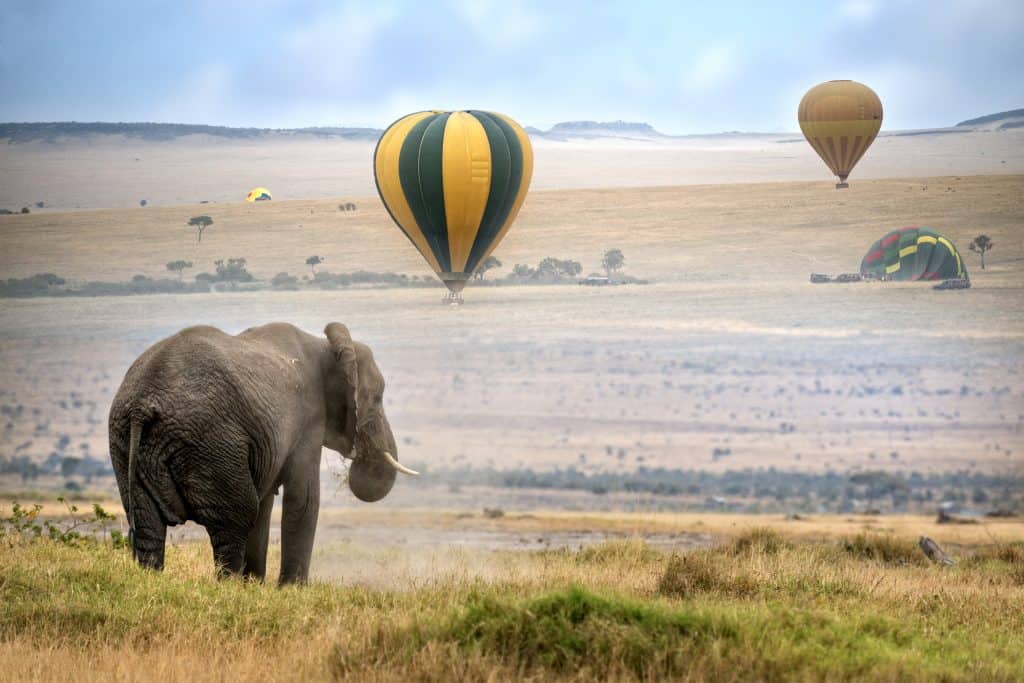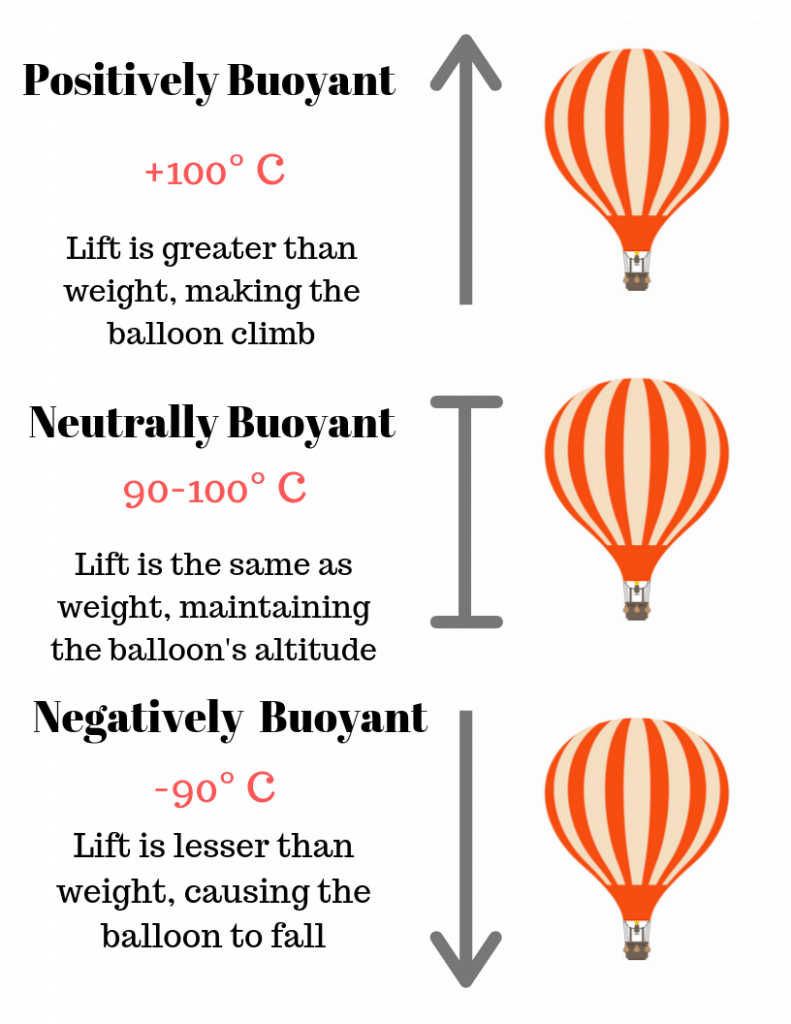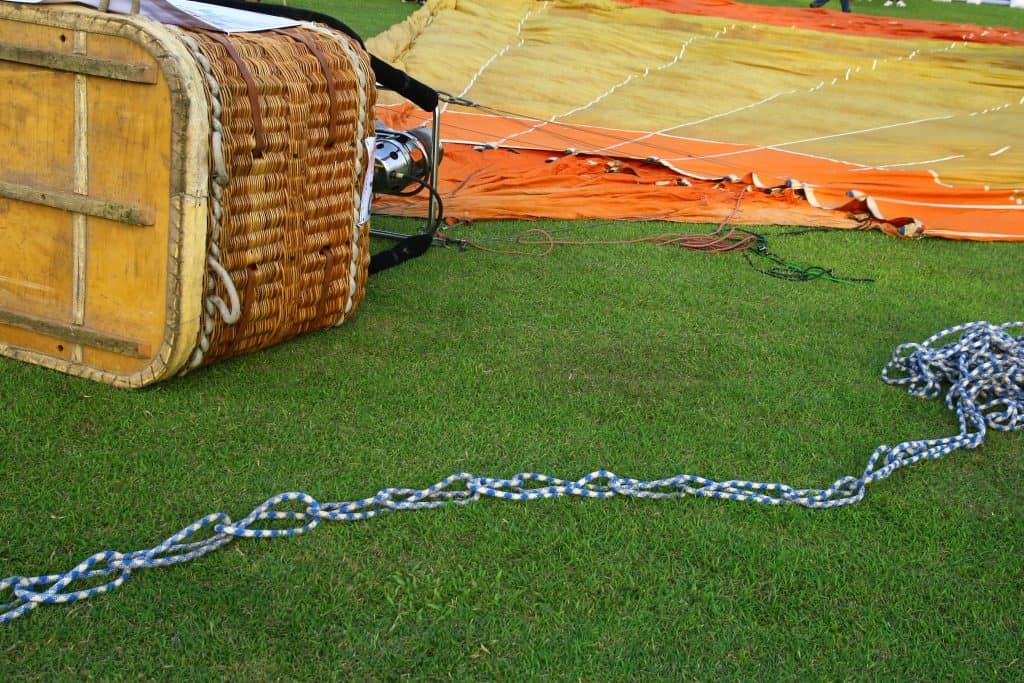
Puppies. Clouds. Charmin toilet paper. We all love soft things. In fact, the word we use to describe stuff we don’t like is “hard”. It’s natural to like soft things, and that includes soft landings.
Hot air balloons attempt to land softly by controlling the speed at which they descend, landing in grassy areas, and getting help from the ground crew. Weather, difficult landing areas, and user error can make it difficult to land softly. Because of the challenges associated with landing, hot air balloons don’t always get to land softly.
Landing a hot air balloon is one of the most difficult skills that a pilot has to learn. When it comes down to it (pun intended), pilots just have to do their best. Of course, crash landings make for some great fail videos!
Controlling Landing Speed
The truth is that hot air balloons don’t tend to go anywhere fast. In fact, just about the only direction they do move fast is down. Naturally, that can create a pretty serious problem.
You see, hot air balloons tend to carry humans, and we humans tend to be fairly killable. There’s something about hitting the ground at really high speeds that tends to flatten us out just a bit.
So step one of landing softly is controlling your landing speed. Right about now you might be saying to yourself, “Duh. I could’ve told you that”. But what you probably don’t know how to control landing speed.
“Duh. I could’ve told you that.”
-You right now
First things first, hot air balloons fly because hot air rises. The more hot air in the envelope, the faster the balloon rises. Conversely, the less hot air in the envelope, the faster the balloon descends.
That process looks a little like this:

If a pilot lets all the hot air out of the envelope, the balloon will go tumbling to the ground. Oof. So, when landing, a pilot has to alternate between keeping the balloon neutrally buoyant and negatively buoyant.
The way a pilot does this is by letting small pockets of hot air out through the parachute valve. This opening is found on the crown of the envelope and can be opened by pulling a cord that reaches to the basket.
To avoid total free fall, the pilot will intermittently interject small bursts of hot air back into the envelope using the burners. In this way, the balloon will descend, level out, and then descend again.
This makes the descent of a hot air balloon look kind of like going down really big stairs.
Weather
One of the biggest things that get in the way of a controlled descent is the weather. In particular, the wind is a huge obstacle to having a soft landing.
Of course, whenever there is bad weather, a pilot wants to land as soon as possible. Normally the weather should be foreseeable, so hopefully, this isn’t a problem in the first place.
Unfortunately, the wind is notoriously hard to predict and even harder to control. If a strong wind gets hold of a hot air balloon, there could be very severe consequences.
A hot air balloon travels as fast as the wind is going, so you could see how strong winds could make it a problem to land. That having been said, it’s normally better to attempt a landing than to wait it out in the sky.
Soft Landing Areas

The second step in having a soft landing is finding a soft landing area. Landing on the soft grass at 10 mph is always going to be better than landing on rocks at 5 mph.
This step involves a lot of preparation on behalf of the flight crew. They need to know basically where they’re flying, where there are good landing areas, and which areas to avoid.
In particular, they want to avoid populated areas and power lines. Both of those can end in more than just a rough landing but in a deadly landing.
Ideally, a landing area is very open and very soft. The grass is great, especially slightly taller grass. A wet field is also very soft, but get ready to get muddy! Especially on your basket!
Having the wide open space is crucial because a soft landing includes not running into anything! You can touch down very softly, but if you then run into a wall, it doesn’t count as a soft landing!
Again, wind can make this step kind of difficult. If a pilot isn’t careful, it can be easy to get blown over a good landing area and into a bad one. Landing early and softly is better than a long flight with a bumpy landing!
The Ground Crew

The third and final step of having a soft landing is getting help from the ground crew. In fact, the difference between a good landing and a bad landing could be the ground crew!
Not every hot air balloon flight will include a ground crew. A lot of private flights just include a pilot and a copilot. Of course, it goes without saying that having a ground crew makes the whole experience better!
When you think about what a ground crew does, you probably think of set up, driving the chase vehicle, and putting everything away. These are all things that the ground crew helps with, but there’s also more.
One of the most important responsibilities the ground crew has is to help with the landing. There’s a number of different ways the ground crew can help with the landing.
Responsibilities
First, they can be at the landing site. This could be the most important responsibility because without this one, none of the other one’s matter. The ground crew should be following in the chase vehicle and be in touch with the pilot vis radio, so this one shouldn’t be too hard.
Second, they can help pull the balloon towards the ground. The pilot will drop a line, or sometimes two, that the ground crew can grab hold of. They can then guide the balloon all the way to the ground.
This responsibility also often includes holding the balloon down once it has landed. This helps the balloon not float away when no one is looking! That would be a costly mistake!
Third, the ground crew helps the envelope get deflated in a safe and efficient way. They can set out a ground tarp for the envelope to fall on. When the parachute valve is opened, they can use a cord to guide the envelope towards the tarp.
Other than that, the ground crew can help the pilot in any way necessary. This is especially true during emergencies. In these kinds of situations, the ground crew can be invaluable!
Of course, people sometimes make mistakes. More than once a crew member has been in the wrong place and gotten run over. Sometimes a line is missed or someone forgot their gloves. These things happen!
Even with the possibility of human error, it always makes more sense to have a ground crew on hand when landing.
Epic Fails
The world we live in is sick. Just sick. Hours and hours of time is spent watching fail videos where people could’ve gotten seriously injured. We are constantly laughing at the mistakes of others. That’s just wrong!
But man do I love it.
I mean, who doesn’t love a good fail video every now and then? To be able to see the absolutely stupid decisions someone else made without any personal consequences? Perfect!
I mean, if anything, there is always something to be learned from these videos. Don’t eat a tide pod. Don’t set off fireworks by your foot. Don’t throw cheese on babies.
In hot air ballooning, there are plenty of fail videos out there. Most of them involve a serious crash landing. You could go and look them up and sift through hundreds of videos, or you could just watch the list I put together!
Why do these people watch for so long before running away?
Is he flying in a trash can?
It just keeps going!
Disclaimer: No one was hurt in any of these videos, except for their pride.
